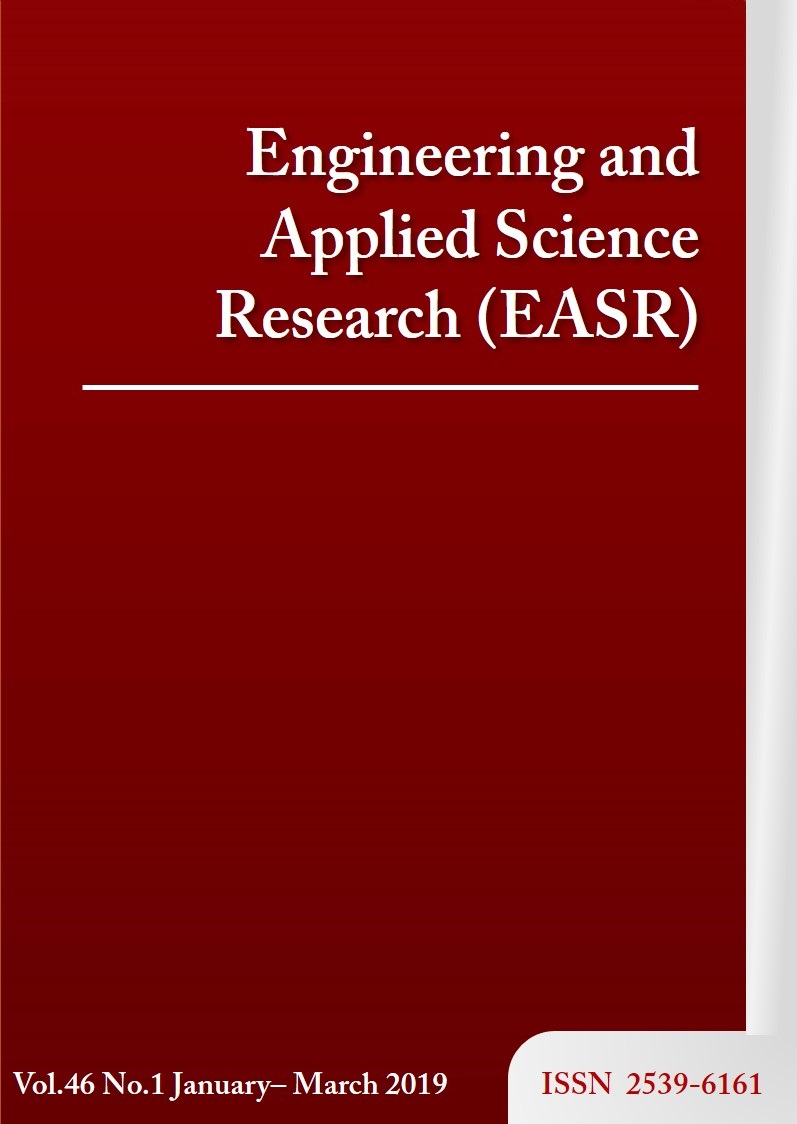Self-evaluation guideline of overlapping spectrum sharing for multi-user MIMO cognitive radio systems
Main Article Content
Abstract
This paper introduces a performance analysis of a multi-user spectrum sharing based the effect of node positions in an MIMO cognitive radio (CR) network. The objective is to develop and enable reliable CR technology. This paper: 1) develops the performance analysis to support multi-user CR systems, 2) describes the significant effect of each node position and the distance between them, 3) combines decision results on both downlink and uplink operations, and, 4) presents a spectrum allocation method for all users in CR systems. The simulation results show the performance of secondary users in terms of the bit error rate inside their coverage areas together with the effect of GPS error. Finally, a complete self-evaluation guideline of the overlapping spectrum sharing for multi-user CR systems is presented. The outcome of this paper is very useful to enhance CR systems. Also, it can be easily implemented in practice for spectrum sharing. The users can realize by themselves whether their positions are in the available area or not.
Article Details
This work is licensed under a Creative Commons Attribution-NonCommercial-NoDerivatives 4.0 International License.
References
[2] Zhang R. On peak versus average interference power constraints for protecting primary users in cognitive radio networks. IEEE Trans Wireless Comm. 2009;8(4):2112-20.
[3] Khan FA, Tourki K, Alouini MS, Qaraqe KA. Performance analysis of a power limited spectrum sharing system with TAS/MRC. IEEE Trans Signal Process. 2014;62(4):954-67.
[4] Tourki K, Khan FA, Qaraqe KA, Yang HC, Alouini MS. Exact performance analysis of MIMO cognitive radio systems using transmit antenna selection. IEEE J Sel Area Comm. 2014;32(3):425-38.
[5] Yang G, Li B, Tan X, Wang X. Adaptive power control algorithm in cognitive radio based on game theory. IET Commu. 2015;9(15):1807-11.
[6] Kim TK, Kim HM, Song MG, Im GH. Improved spectrum-sharing protocol for cognitive radio networks with multiuser cooperation. IEEE Trans Comm. 2015;63(4):1121-35.
[7] Vassaki S, Poulakis MI, Panagopoulos AD. State-based potential power allocation game in a cooperative multiuser network. IET Commu. 2016;10(11):1320-8.
[8] Khalfi B, Ghorbel MB, Hamdaoui B, Guizani M. Distributed fair spectrum assignment for large-scale wireless DSA networks. In: Weichold M, Hamdi M, Shakir MZ, Abdallah M, Karagiannidis GK, Ismail M, editors. International Conference on Cognitive Radio Oriented Wireless Networks; 2015 Apr 21; Doha, Qatar. Switzerland: Springer; 2015. p. 631-42.
[9] Goldsmith A. Wireless communications. Cambridge: Cambridge University Press; 2005.
[10] Gradshteyn IS, Ryzhik IM. Table of integrals, series, and products. 7th ed. New York: Academic Press; 2007.
[11] ETSI. ETSI TS 136 101 V10. 3.0 (2011-06); LTE; Evolved universal terrestrial radio access (E-UTRA); User Equipment (UE) radio transmission and reception (3GPP TS 36.101 version 10.3.0 Release 10). France: ETSI; 2011.
[12] Davari N, Gholami A. An asynchronous adaptive direct Kalman filter algorithm to improve underwater navigation system performance. IEEE Sens J. 2017;17(4):1061-8.



